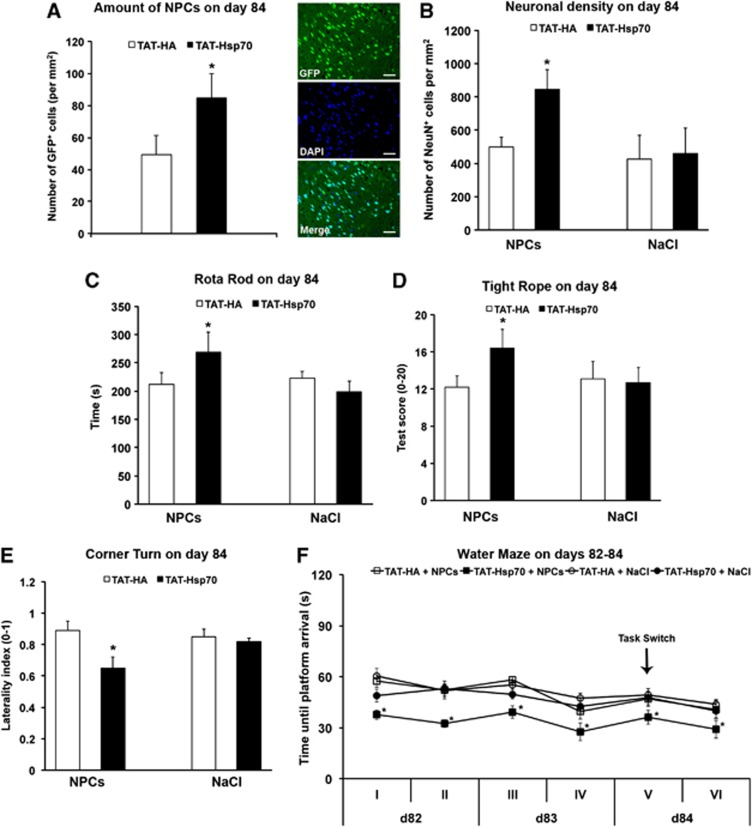Figure 5.
TAT-heat-shock protein 70 (Hsp70) provides favorable extracellular milieu for postischemic neural precursor cell (NPC) transplantation. Mice received TAT-Hsp70 or TAT-HA during reperfusion plus additional infusion on day 14 followed by intravenous/systemic transplantation of 1 × 106 green fluorescence protein positive (GFP+) NPCs on day 28 poststroke. (A) Assessment of numbers of GFP+ NPCs (n=12 per condition) within the ischemic hemisphere on day 84 for animals that had been treated with either TAT-Hsp70 or TAT-HA. Photo depicted shows representative orientation of NPCs within the ischemic basal ganglia on day 84 in mice that had been treated with TAT-Hsp70. (B) Analysis of postischemic brain injury (n=11 to 12) on day 84 using NeuN staining. Animals received intravenous infusion of TAT-Hsp70 or TAT-HA as stated above plus additional injection of NPCs or NaCl (control) on day 28 poststroke. (C–E) Motor coordination tests (n=11 to 12) were performed on day 84 using the rotarod, the tightrope, and the corner turn test. For the rotarod test, maximum test time was 300 seconds, whereas for the tightrope test, animals were scored from 0 (minimum) to 20 (maximum). Using the corner turn test, the postischemic laterality index (0 to 1) for the four different treatment groups was determined on day 84. High values of laterality indices refer to more pronounced postischemic injury. (F) Assessment of cognitive impairment in stroke mice (n=11 to 12) was performed using a modified water maze test on days 82 to 84 with a maximal testing time of 90 seconds per trial. Animals that did not reach the platform were scored 90 seconds. A total of 24 trials were performed, and four trials were always grouped as one run. The platform was always located at the same position except for run V, where the position was changed (‘task switch'). The platform was placed back on its original position for the final run VI. *Significantly different from controls, P<0.05. Scale bar, 40 μm. DAPI, 4,6-diamidino-2-phenylindole.

